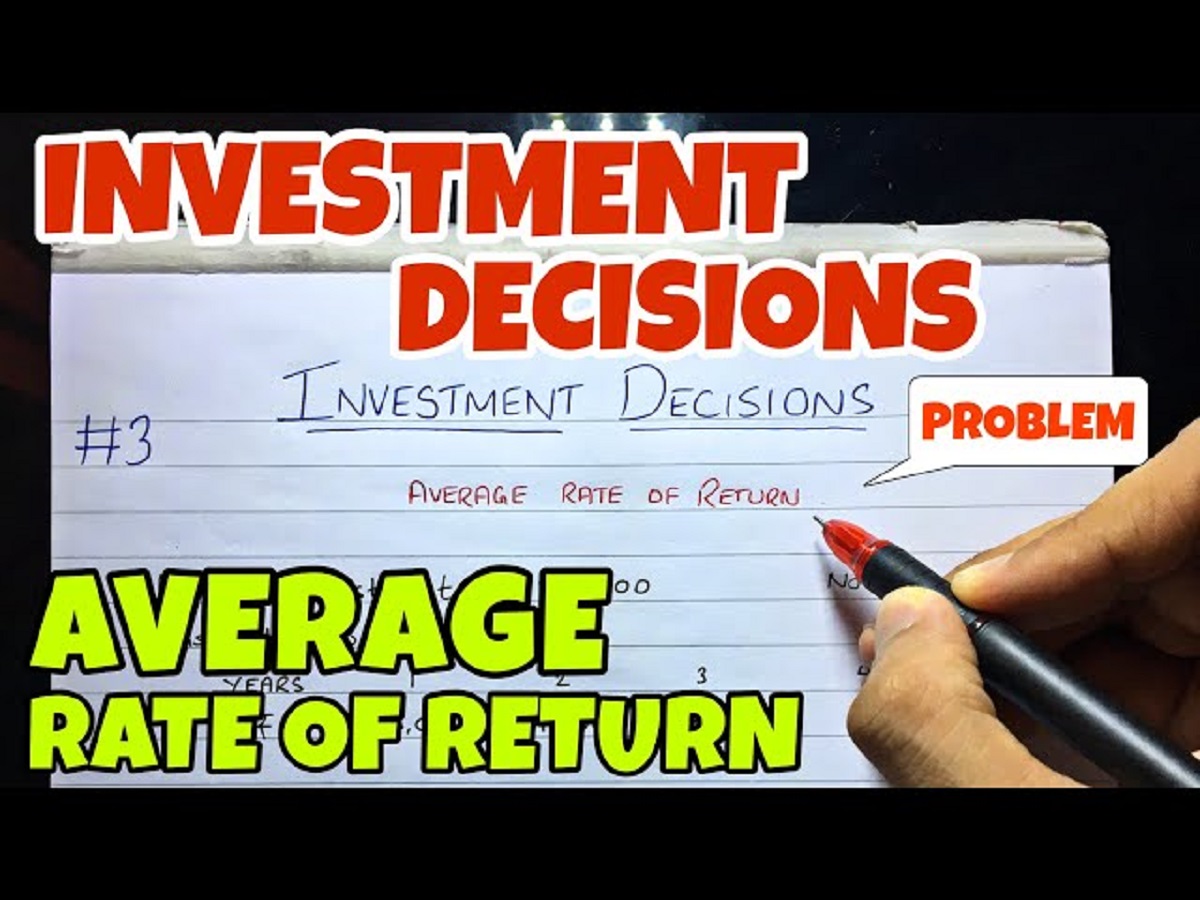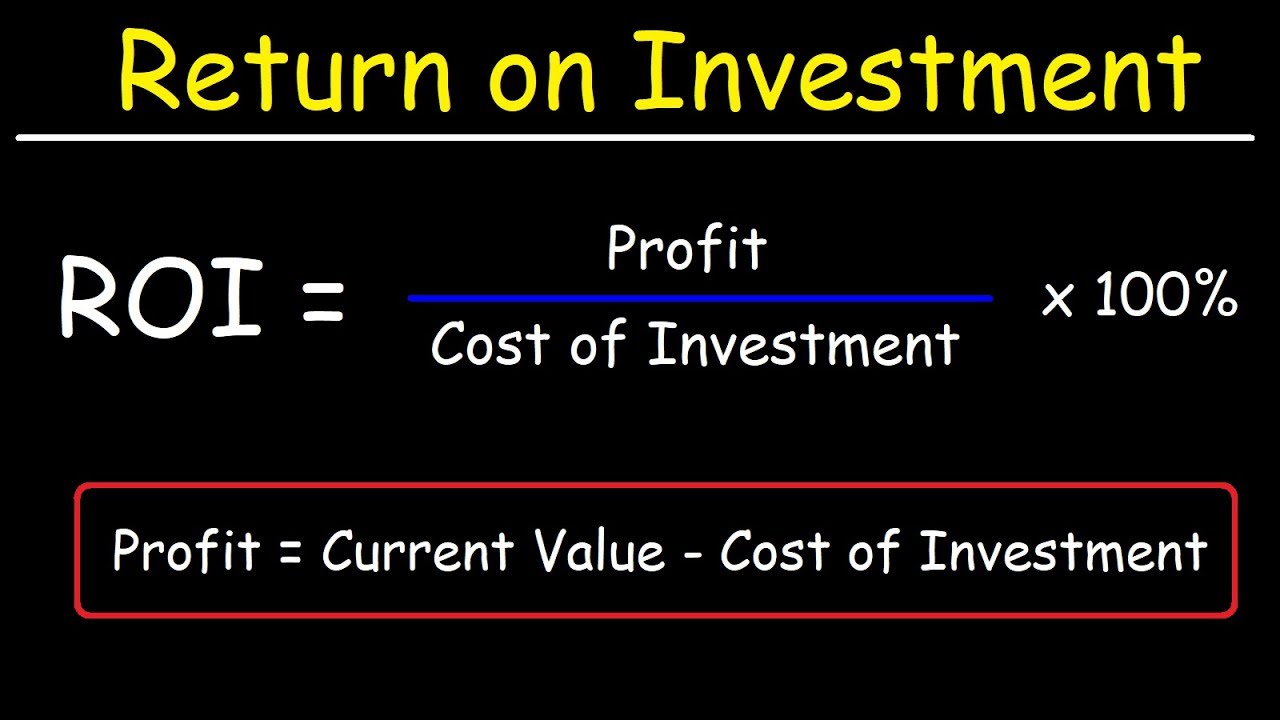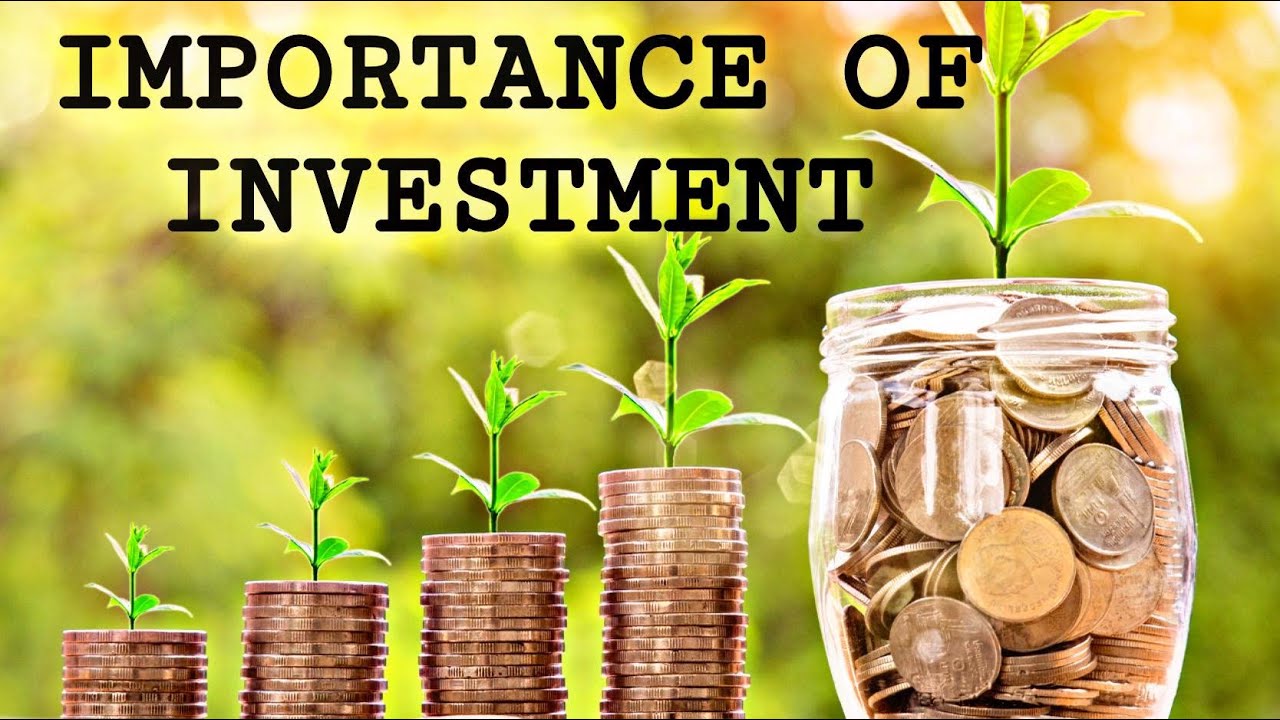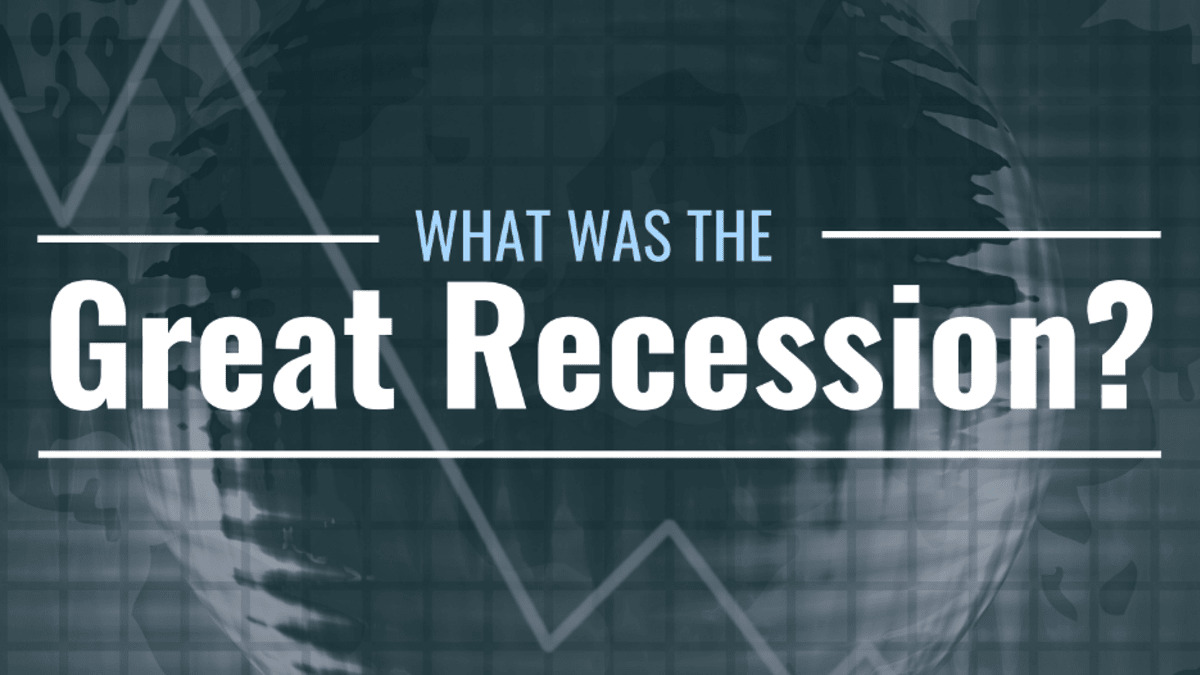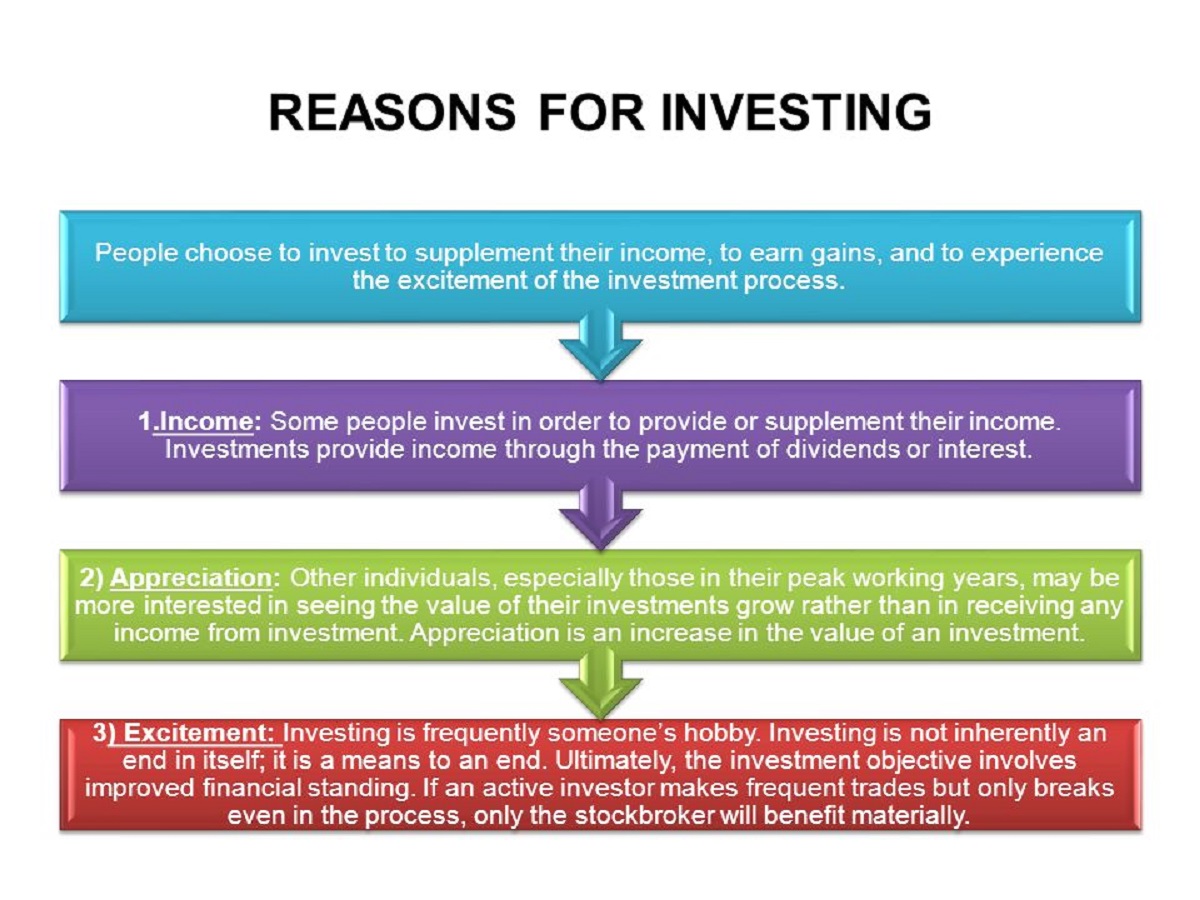Introduction
In the world of investing, the potential for higher returns often comes hand in hand with increased risk. Investors are well aware that not all investments are created equal, and the level of risk associated with a particular investment can vary significantly. This leads to the question: why do investors require higher returns for some investments?
The answer lies in the risk-reward tradeoff. As a general rule, investors demand higher returns for investments that carry higher levels of risk. This concept is rooted in the fundamental principle that individuals and institutions want to be compensated for taking on additional risk. In other words, those who are willing to put their capital at greater risk expect a greater potential for reward. This is the underlying philosophy that drives the demand for higher returns in certain investments.
Market volatility is one of the key factors that influences investors’ demand for higher returns. When markets become highly volatile, there is a greater potential for significant losses. In order to justify the added risk, investors expect a higher return. This can be seen during times of economic uncertainty or when specific industries are experiencing heightened levels of volatility.
Lack of liquidity is another factor that contributes to investors seeking higher returns. Investments that are illiquid are more difficult to buy or sell quickly without significantly impacting the price. Therefore, investors are less willing to invest in illiquid assets unless they are compensated with higher potential returns.
Furthermore, investments with high barriers to entry often require higher returns. These barriers can include high initial investment costs, regulatory requirements, or limited access to specific markets. Investors require greater returns to account for the additional challenges and obstacles they face in entering these investments.
Uncertain future cash flows can also lead to a higher required return. Investments where future cash flows are uncertain or dependent on various factors increase the risk profile. Investors demand a higher return to compensate for the uncertainty and potential volatility in future cash flows.
Poor market conditions, such as economic downturns or recessions, can also drive investors to demand higher returns. During these periods, there is greater risk of financial losses, and investors want to mitigate that risk by seeking higher potential returns.
Add in lack of diversification as another factor. When an investment is not diversified across multiple assets or sectors, it becomes riskier. Investors require higher returns to justify the concentration of their investment and compensate for the lack of diversification.
Lastly, high management fees can contribute to the demand for higher returns. When investment vehicles charge high fees, it reduces the overall return for investors. In order to achieve their desired level of return, investors may need to demand higher returns to compensate for the impact of management fees.
Overall, investors require higher returns for certain investments due to the increased risk associated with those investments. Factors such as market volatility, lack of liquidity, high barriers to entry, uncertain future cash flows, poor market conditions, lack of diversification, and high management fees all contribute to investors seeking higher potential returns. By understanding these factors, investors can make more informed decisions and effectively manage their risk-reward ratio.
The Risk-Reward Tradeoff
The risk-reward tradeoff is a fundamental concept in investing that highlights the relationship between the potential for higher returns and the level of risk involved. In simple terms, the higher the perceived risk of an investment, the greater the expected return that investors demand.
Investors understand that there is no such thing as a completely risk-free investment. Every investment carries some level of inherent risk, whether it be market volatility, economic factors, industry-specific risks, or other variables. These risks can impact the value or performance of the investment, potentially leading to financial losses.
Investors assess the level of risk associated with an investment by evaluating various factors. They consider the historical performance of the asset or the market it belongs to, as well as any potential future changes that may affect its value. They also take into account the specific risks associated with the investment, such as political instability or regulatory changes.
Based on their risk assessment, investors determine the minimum expected return they require to compensate for taking on that level of risk. This forms the basis for the risk-reward tradeoff. Higher-risk investments are expected to provide higher potential returns, as investors demand a premium for assuming the greater risk.
For example, investing in stocks of emerging market companies is generally considered riskier than investing in blue-chip stocks of established companies. The emerging market stocks may offer higher growth potential, but they are also subject to greater volatility. Investors demand a higher return for taking on this additional risk compared to the more stable returns associated with blue-chip stocks.
The risk-reward tradeoff is not a fixed concept and can vary based on individual investor preferences and market conditions. Some investors may be more risk-averse and require a higher return for any given level of risk, while others may be more willing to take on risk for the potential of even higher returns.
In general, investments that offer the potential for higher returns often come with higher levels of uncertainty and volatility. This means that investors must be willing to tolerate fluctuations in the value of their investments and potentially endure periods of negative performance. In return, they seek the possibility of significant gains that can outweigh the inherent risk.
Understanding the risk-reward tradeoff is crucial for investors to make informed decisions and align their investment objectives with their risk tolerance. By carefully assessing the level of risk they are comfortable with and demanding an appropriate expected return, investors can better navigate the complexities of the investment landscape and work towards achieving their financial goals.
Market Volatility
Market volatility is a key factor that influences investors’ demand for higher returns. It refers to the degree of variation or fluctuation in the price or value of financial assets within a given market. When markets experience high volatility, it signifies that prices are rapidly changing, leading to uncertainty and potential financial risk.
Investors require higher returns in response to market volatility to compensate for the increased risk they face. During periods of heightened volatility, there is a greater potential for significant losses. This is because price movements can be more pronounced and unpredictable, making it challenging to accurately forecast future returns.
Market volatility can be driven by various factors, including economic conditions, geopolitical events, changes in industry dynamics, or unexpected shocks to the market. These factors can result in large swings in asset prices, creating both opportunities and risks for investors.
When markets are highly volatile, investors demand higher returns as a way to mitigate the uncertainty and potential losses associated with their investments. By seeking higher returns, they aim to compensate for the additional risks they are exposed to during volatile market conditions.
However, it is important to note that not all investments are affected by market volatility to the same extent. Some assets tend to be more volatile than others due to their inherent characteristics or the nature of the market they operate in. For example, stocks are generally considered more volatile than bonds, as they are subject to various market forces and factors that can drive significant price fluctuations.
Furthermore, different sectors or industries may be more or less susceptible to market volatility. For instance, technology stocks are often known for their high volatility, as they are heavily influenced by factors such as technological advancements, changes in consumer behavior, or market sentiment towards the sector.
During periods of high market volatility, investors may exercise caution and reassess their investment strategies. They may seek alternative investment options, such as diversifying their portfolio, investing in assets that are less affected by market volatility, or allocating a portion of their investments to more stable and defensive assets.
Overall, market volatility plays a significant role in driving investors’ demand for higher returns. This is due to the increased risks and uncertainties associated with investing in volatile markets. By understanding and considering the impact of market volatility, investors can make more informed decisions and adjust their investment strategies accordingly.
Lack of Liquidity
Liquidity refers to the ease with which an investment can be bought or sold in the market without significantly impacting its price. In other words, it measures how quickly an asset can be converted into cash. Investments that lack liquidity, such as certain types of securities or assets, tend to have a limited number of buyers and sellers, making it more difficult for investors to enter or exit positions swiftly.
When an investment lacks liquidity, investors typically require higher returns to compensate for this illiquidity. This is because illiquid assets may not be readily sold at their fair market value, and investors may need to accept lower prices or incur additional costs in order to sell their holdings.
One reason why investors demand higher returns for illiquid assets is the uncertainty and risk associated with the limited liquidity. If unexpected circumstances arise and the need for immediate cash arises, selling illiquid investments can be challenging and time-consuming. Investors who have their capital tied up in illiquid assets may face difficulties in accessing funds when they need them most.
Lack of liquidity is particularly notable in certain types of investments, such as real estate, private equity, or certain types of debt securities. These assets typically have longer holding periods and fewer active buyers and sellers in the market, making them less liquid compared to publicly traded stocks or bonds.
Add in the potential impact of external factors, such as economic downturns or changes in the overall market environment, and the lack of liquidity can become even more pronounced. During periods of financial stress or market volatility, finding buyers for illiquid assets can be even more challenging, amplifying the need for higher returns to compensate for this additional risk.
Investors also have to consider the costs associated with owning illiquid investments. These costs can include administrative fees, legal expenses, or valuation fees that are involved in managing and selling illiquid assets. Such costs can eat into potential returns if they are not adequately accounted for when investing.
Investors with an appetite for higher returns may find the illiquidity of certain assets attractive due to the potential for higher gains. However, it is crucial to recognize the trade-offs and potential challenges that come with investing in illiquid assets. It may be advisable for investors to carefully assess their liquidity needs, risk tolerance, and investment horizon before allocating a significant portion of their portfolio to such illiquid investments.
In summary, the lack of liquidity in certain investments results in investors requiring higher returns. This compensation is necessary to offset the risks, uncertainties, and potential difficulties associated with buying and selling illiquid assets. By demanding a higher return, investors aim to mitigate the impact of illiquidity on their investment portfolios and ensure that potential gains outweigh the risks involved.
High Barriers to Entry
Investments with high barriers to entry often require higher returns, as these barriers create significant challenges and limitations for potential investors. High barriers to entry refer to the obstacles and costs that individuals or institutions face when attempting to enter a particular investment or market.
One common barrier to entry is the high initial investment cost. Some investments, such as real estate properties or private equity funds, may have substantial minimum investment requirements that make them accessible only to investors with significant capital. In order to justify tying up a large amount of capital in these investments, investors demand higher returns to compensate for the opportunity cost of allocating funds to such illiquid and high-cost opportunities.
Regulatory requirements can also create barriers to entry. Certain investments, especially those in highly regulated industries such as pharmaceuticals or finance, may require extensive compliance measures and approvals. These regulations can make it difficult for new entrants to navigate the complex legal and operational requirements, resulting in higher costs and greater risks. To attract investors in these regulated sectors, higher returns may be necessary to offset the potential regulatory challenges and uncertainties.
Limited access to specific markets is another barrier to entry that can drive up the required returns. Some investments, such as emerging markets or niche industries, may have limited availability or restricted access for foreign investors. The exclusivity and limited competition in these markets create higher demand and potential for returns. Investors seeking entry into these markets must be willing to accept the associated risks and justify the higher returns required to compensate for the limited opportunities.
High barriers to entry often indicate that certain investments are more complex or specialized, which can increase the level of risk. For instance, investments in cutting-edge technology or biotech companies may require specialized knowledge and expertise that not all investors possess. In order to attract capital from those who are willing to take on this specialized risk, higher returns are necessary.
Furthermore, investments with high barriers to entry can have longer time horizons for generating returns. Investments such as infrastructure projects or venture capital investments often require a longer investment period before realizing significant returns. Investors who commit their capital to these long-term projects expect higher returns to compensate for the extended time period and associated risks.
Overall, high barriers to entry result in higher required returns for investments. The challenges and limitations created by these barriers, such as high initial investment costs, regulatory requirements, limited market access, specialized knowledge, and longer investment horizons, all contribute to the demand for higher returns. Investors must carefully assess these barriers and consider the potential risks and rewards before committing their capital to investments with high barriers to entry.
Uncertain Future Cash Flows
Investors often require higher returns when future cash flows of an investment are uncertain. The uncertainty surrounding future cash flows introduces risks and challenges that investors must consider when evaluating the attractiveness of an investment.
There are various factors that can contribute to the uncertainty of future cash flows. Changes in market conditions, shifts in consumer behavior, or technological advancements can all impact the revenue and profitability of an investment. Additionally, factors such as changes in government regulations or competitive dynamics can introduce further uncertainty in the cash flows of an investment.
When the future cash flows of an investment are uncertain, investors demand higher returns to compensate for the additional risk. This is because uncertain cash flows imply a higher level of volatility and potential downside. Investors need to be adequately rewarded for taking on this uncertainty and potential for negative surprises.
Uncertain cash flows make it more difficult for investors to estimate the value and profitability of an investment. This can make it challenging to determine the appropriate pricing and valuation for the investment, leading investors to demand higher returns to account for these estimation risks.
Investors also need to consider the potential impact of uncertain cash flows on their investment holding period. Uncertainty can potentially extend the time required to achieve the expected return. As a result, investors may demand higher returns to compensate for the increased timeframe and potential opportunity cost associated with tying up their capital for a longer period.
Uncertain cash flows are often more prevalent in certain industries or sectors that are prone to rapid changes and disruption. Technology-based sectors, for example, are known for their high levels of innovation and volatility, which can introduce significant uncertainty in future cash flows. Consequently, investors in these sectors typically demand higher returns to navigate the uncertainties and potential risks.
It is worth noting that while uncertain cash flows may warrant higher returns, investors must be careful not to overlook potential opportunities. The higher required returns associated with uncertain cash flows may deter some investors, potentially leading to undervalued investment opportunities for those willing to take on the additional risk.
In summary, when future cash flows are uncertain, investors tend to require higher returns. This is because uncertain cash flows introduce additional risks and challenges, such as valuation uncertainties, extended holding periods, and potential negative surprises. By demanding higher returns, investors aim to mitigate these uncertainties and adequately compensate for the extra risks associated with investments with uncertain cash flows.
Poor Market Conditions
Poor market conditions can have a significant impact on investment performance and investors’ demand for higher returns. These conditions refer to periods of economic downturns, recessions, or unfavorable market trends that can adversely affect the overall financial landscape.
During poor market conditions, investors typically face increased risks and uncertainties. The value of their investments may decline, and there may be a lack of favorable investment opportunities. To compensate for these adverse circumstances, investors often require higher returns.
Market downturns are often characterized by decreased consumer spending, reduced business activity, and weakened investor confidence. These factors can lead to a decrease in the demand for goods and services, causing companies to experience lower sales and potential financial difficulties. As a result, investors demand higher returns to compensate for the increased risk of investing in companies that may struggle during these challenging market conditions.
Poor market conditions can also introduce heightened volatility, creating significant price fluctuations in financial assets. This volatility can make it more difficult for investors to accurately predict the future performance of their investments. As a result, investors demand higher returns to account for the increased uncertainty and potential losses associated with investing in volatile markets.
Additionally, during poor market conditions, investments that were previously performing well may experience a decline in value. Investors who have suffered losses seek to recoup their losses and attain higher returns going forward. This increased demand for higher returns stems from the need to compensate for past losses and to rebuild their portfolios in an unfavorable market environment.
Poor market conditions may also limit the availability of investment opportunities. During economic downturns, businesses may struggle, leading to fewer potential investment options. Investors seeking attractive returns must then compete for a limited pool of opportunities, driving up the required returns.
Furthermore, changes in governmental policies, regulations, or global economic factors can contribute to poor market conditions. For instance, trade disputes, unexpected political events, or significant changes in interest rates can all have a substantial impact on the overall market environment. Investors demand higher returns in response to these factors as they add an additional layer of uncertainty and risk to their investment decisions.
It is important to note that poor market conditions are not universal across all investments and markets. Different sectors and asset classes may be more or less affected. For example, defensive stocks or investments in recession-resistant industries may be less impacted during economic downturns compared to more cyclical sectors.
In summary, poor market conditions create a challenging investment environment, leading investors to demand higher returns. The increased risks, uncertainties, reduced availability of investment opportunities, and potential losses associated with poor market conditions contribute to investors seeking higher returns to compensate for the unfavorable market dynamics.
Lack of Diversification
The lack of diversification in an investment portfolio can lead to investors demanding higher returns. Diversification is a risk management strategy that involves spreading investments across different asset classes, sectors, and geographic regions. By diversifying their portfolio, investors aim to minimize the impact of any individual investment’s performance on their overall returns.
When an investment portfolio lacks diversification, it becomes more susceptible to concentration risk. Concentration risk occurs when a significant portion of an investment portfolio is allocated to a single asset or a small number of assets. This lack of diversification increases the exposure to the performance and risks associated with those specific investments.
Investors recognize that a lack of diversification can amplify the potential downside of their portfolio. If an investment performs poorly or experiences significant losses, the overall portfolio can be significantly impacted. To compensate for the increased risk due to concentration, investors require higher returns.
Additionally, a lack of diversification can limit the ability to mitigate specific risks associated with different asset classes or sectors. Each asset class and sector has its own unique risk profile, and by diversifying across multiple asset classes, investors can potentially reduce the impact of any single risk factor. When an investment portfolio lacks diversification, investors demand higher returns to compensate for the increased vulnerability to specific risks affecting their concentrated holdings.
Lack of diversification can also be detrimental during periods of market volatility or economic downturns. Different asset classes and sectors have varying degrees of sensitivity to market conditions. By diversifying across multiple asset classes, investors can potentially offset losses in one area with gains in another. However, without diversification, a portfolio becomes more exposed to the risks associated with a single asset class or sector. To account for the potential volatility and increased risk during unfavorable market conditions due to a lack of diversification, investors demand higher returns.
Furthermore, a lack of diversification limits the potential benefits of capital allocation. By diversifying investments, investors can allocate their capital to opportunities with varying risk and return profiles. This dynamic approach to capital allocation can maximize the potential returns while managing the overall risk. In contrast, a lack of diversification restricts the ability to take advantage of different investment opportunities, potentially limiting the returns that can be achieved. Therefore, investors may require higher returns to compensate for the missed opportunities resulting from a lack of diversification.
In summary, the lack of diversification in an investment portfolio increases concentration risk and limits the ability to mitigate specific risks and take advantage of various investment opportunities. Investors demand higher returns to compensate for the potential downsides and missed opportunities associated with a lack of diversification. By diversifying their portfolios, investors can manage risk more effectively and potentially achieve a more balanced and optimal risk-return profile.
High Management Fees
High management fees can significantly impact investors’ demand for higher returns. Management fees are charged by investment professionals or firms for overseeing and managing investment portfolios or funds. These fees are typically calculated as a percentage of the total assets under management.
When management fees are high, investors require higher returns to compensate for the impact of these fees on their overall investment performance. High management fees reduce the net returns earned by investors, as a significant portion of their gains is absorbed by these fees.
Investors consider management fees as a cost that must be justified by the additional value provided by investment professionals. If the fees are high, investors expect a commensurate increase in the level of expertise, research, and performance that the investment manager delivers. They demand higher returns to ensure that the investment manager’s fees are justified and do not erode their overall investment returns.
High management fees can be particularly burdensome if the investment manager fails to outperform the benchmark or deliver consistent returns. If the investment performance does not justify the fees, investors may view the higher fees as unnecessary and demand higher returns to compensate for the perceived lack of value provided by the investment manager.
Furthermore, high management fees can have a compounding effect over time. As fees are charged annually based on a percentage of the assets under management, the impact of these fees can grow over the long term. This reduces the overall returns earned by investors, making it even more important for them to demand higher returns to offset the negative impact of high management fees.
It is important for investors to carefully consider the fee structure and level of fees charged by investment professionals. While management fees can reflect the value and expertise provided by the investment manager, they should be reasonable and in line with industry standards. Investors need to assess whether the potential benefits of the investment manager’s services outweigh the impact of the fees on their net returns.
Moreover, high management fees can incentivize investors to seek lower-cost alternatives, such as passively managed index funds or exchange-traded funds (ETFs). These investment options typically have lower management fees as they aim to replicate the performance of a specific market index rather than actively manage investments. In response to the availability of these low-cost alternatives, investment managers may need to deliver higher returns to justify their higher fees.
In summary, high management fees can reduce the net returns earned by investors, leading them to demand higher returns. Investors expect the investment manager’s fees to be justified by the additional value they provide and the performance they generate. By demanding higher returns, investors aim to mitigate the impact of high management fees on their overall investment performance and ensure that the fees paid are commensurate with the value received.
Conclusion
Investors often require higher returns for certain investments due to various factors that increase risk and uncertainty. Understanding these reasons helps investors make informed decisions and effectively manage their portfolios.
The risk-reward tradeoff is a fundamental concept that drives investors to demand higher returns for riskier investments. Market volatility, lack of liquidity, high barriers to entry, uncertain future cash flows, poor market conditions, lack of diversification, and high management fees all contribute to the need for higher returns.
Market volatility introduces heightened risks and potential for significant losses, leading investors to demand higher returns to compensate for the increased uncertainty. Investments lacking liquidity are less attractive to investors, who require higher returns to offset the challenges associated with selling illiquid assets. Investments with high barriers to entry, such as high initial costs or regulatory requirements, demand higher returns to compensate for the obstacles and limitations faced by investors.
Uncertain future cash flows increase the risk profile of investments, necessitating higher returns for investors to navigate the unpredictable nature of these investments. Poor market conditions, such as economic downturns or recessions, heighten risks and uncertainties, leading investors to demand higher returns to mitigate potential losses. Lack of diversification increases concentration risk, prompting investors to require higher returns to compensate for the potential impact of a single investment’s performance. Lastly, high management fees reduce net returns earned by investors, leading them to demand higher returns to offset the negative impact of the fees.
By understanding these factors, investors can assess the level of risk they are comfortable with and make informed decisions. They can also develop strategies to manage and mitigate the risks associated with these investments. Diversification, careful evaluation of management fees, and staying informed about market conditions can help investors navigate the complexities of the investment landscape.
Ultimately, the requirement for higher returns for certain investments reflects the need to compensate for risks and uncertainties. Thus, investors must carefully weigh their risk tolerance, investment objectives, and potential rewards when making investment decisions.









